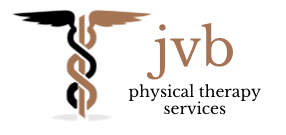Stroke Rehabilitation Continuing Education Courses
Fees
Complete our contact form to request contract stipulations for fees and payment schedule. Allow 72 hours (3 business days) for a response.
Responsibilities
Sponsor
- secures space for lecture and or lab
- solicits individuals for lab demonstration or practice if warranted
- provides audio-visual equipment for course presentation
- prints & mails or emails brochures
- prints course booklets or provides link for electronic copy
- provides technology infrastructure for virtual/online course presentations
- applies for and issues continuing education units/contact (clock) hours
jvb physical therapy services, llc
- develops course content specific to sponsor request
- provides all documentation required to apply for continuing education units and or contact (clock) hours
- provides brochure information & course booklet for printing or electronic distribution according to established deadline
- provides Microsoft PowerPoint ® and/or video presentation for course
- provides evidence-based references for course content
Continuing Education Units (CEUs) and Contact (Clock) Hours (CCHs)
Sponsor will apply for and issue certificates of attendance/continued competency to denote continuing education units (CEUs) or contact (clock) hours (CCHs) for course participant. Criteria to issue CEUs and CCHs are based on standards established by the American Physical Therapy Association and state licensure requirements. Visit your state’s therapy licensure board website for CEU requirements. Jennifaye V. Brown, PT, MSPT, PhD, NCS, CAPS dba jvb physical therapy services, llc. will provide sponsor with all information and documents required for CEU/CCH application.
Course Information
Complete our contact form to request course information and pricing. Allow 72 hours (3 business days) for a response.
“Dr. Brown was very knowledgeable and provided evidence based practice information, which is applicable for home-health setting.”
Courses Offered
All courses subject to change in content, length, and time.
- Physical Therapy Examination for an Ankle Foot Orthosis
- Clinical Neuroanatomy for Rehabilitation Therapists: Lesions, Impairments, and Treatment Interventions
- S2R: Strengthening Concepts for Stroke Recovery
- Use of Elastic Bands for Strengthening After Stroke
- Motor Recovery Post CVA
- Stroke Approach: The Arm & Leg of It
- Core Stabilization Exercises for Patients with Stroke
- Neurologic Gait Analysis and Treatment Interventions
- Interventions for Correcting Pelvic Hike – Insights for Physical Therapists Assistants
- Interventions for Resolving Foot Drop Without AFOs – Insights for Physical Therapists Assistants
Refer to curriculum vita for a list of all courses.

